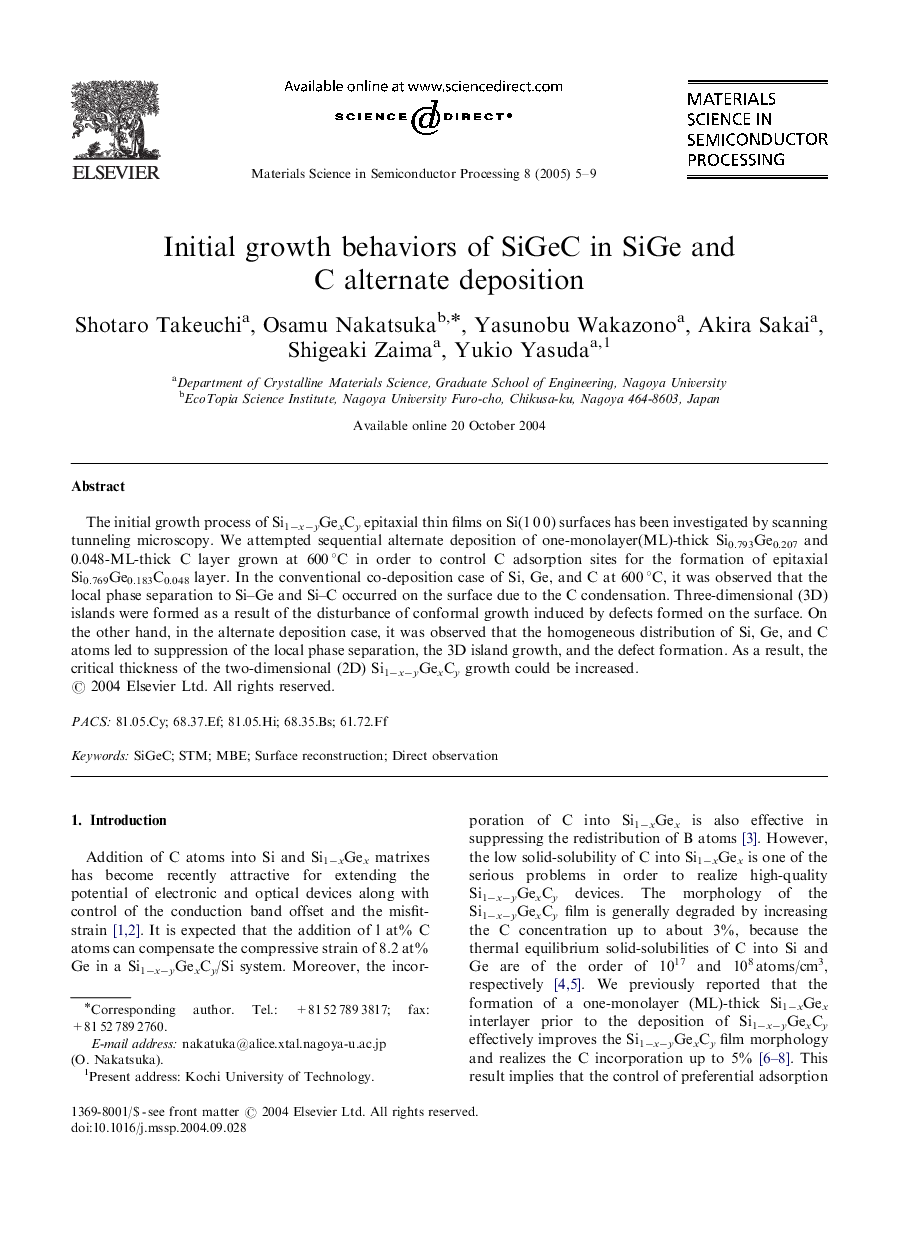| Article ID | Journal | Published Year | Pages | File Type |
|---|---|---|---|---|
| 9699121 | Materials Science in Semiconductor Processing | 2005 | 5 Pages |
Abstract
The initial growth process of Si1âxâyGexCy epitaxial thin films on Si(1 0 0) surfaces has been investigated by scanning tunneling microscopy. We attempted sequential alternate deposition of one-monolayer(ML)-thick Si0.793Ge0.207 and 0.048-ML-thick C layer grown at 600 °C in order to control C adsorption sites for the formation of epitaxial Si0.769Ge0.183C0.048 layer. In the conventional co-deposition case of Si, Ge, and C at 600 °C, it was observed that the local phase separation to Si-Ge and Si-C occurred on the surface due to the C condensation. Three-dimensional (3D) islands were formed as a result of the disturbance of conformal growth induced by defects formed on the surface. On the other hand, in the alternate deposition case, it was observed that the homogeneous distribution of Si, Ge, and C atoms led to suppression of the local phase separation, the 3D island growth, and the defect formation. As a result, the critical thickness of the two-dimensional (2D) Si1âxâyGexCy growth could be increased.
Related Topics
Physical Sciences and Engineering
Engineering
Electrical and Electronic Engineering
Authors
Shotaro Takeuchi, Osamu Nakatsuka, Yasunobu Wakazono, Akira Sakai, Shigeaki Zaima, Yukio Yasuda,
